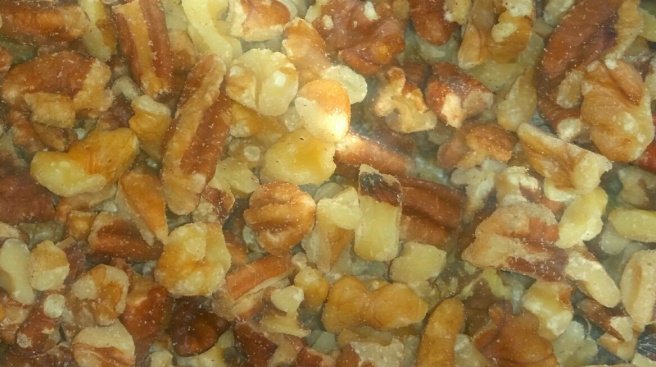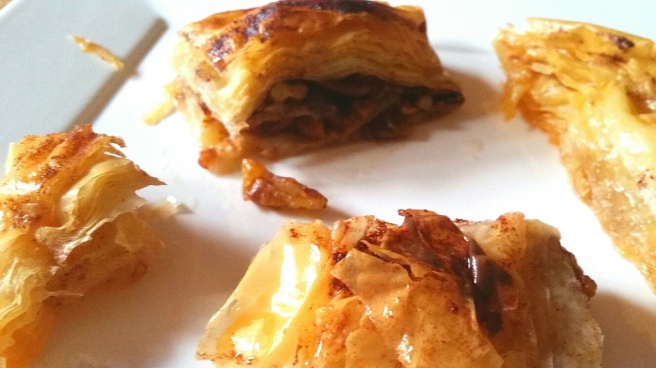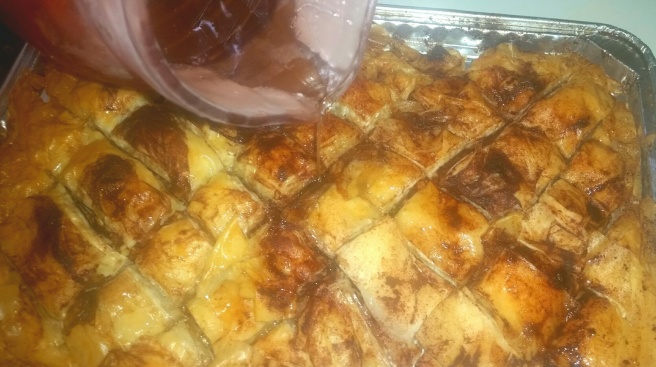Thanks to TB for the photography.
This book took me five years to read, but not because it’s particularly long or boring. No, My Name is Red is one of the most entertaining and complex murder mysteries I’ve ever read. The book is told from 12 different viewpoints, including the murder victim himself – a painter in the Sultan’s palace; a Jewess matchmaker; the daughter of the house Shekure; her suitor Black; a dog painted on a wall; three of the murder victim’s colleague painters; Satan himself; the murderer; and the color red. Hence the title.

I’ve read many books set during the Ottoman Empire, that is, Istanbul in the 17th century, but this is by far my favorite. It’s a murder mystery, a love story, and a very Byzantine – pardon the pun – treatise on the power and nature of art and symbols, politics and religion, and the meaning those concepts hold in everyday life.

I am not an expert on the Islamic religion, but from this book, I took that representing the human form was required to be highly stylized – to be depicted as Allah would see the individual, not as the artist would – and that depicting anything from the Koran is deeply disrespectful and forbidden because of the fear that the image would be worshiped instead of God. It’s interesting, because I have a Jewish friend and a friend who practices Islam, and the three of us have had long and intense discussions about the nature of religion and God/Jehovah/Allah, and how different religions and cultures have their own ways of depicting the divine.

The long and very complicated -and let’s face it, mostly warlike – relationship between the Jewish religion, the Christian/Catholic faith, and the beliefs of Islam do have some fascinating parallels and commonalities. They have as many points of differentiation, however, and it was so interesting to read this book and see how art and artists, in particular, were revered and feared in 18th century Istanbul as artists during the Renaissance, but for such different (and similar!) reasons.

Esther, the matchmaker, is a Jew and carries love letters between Shekure and Black, the two main characters whose love story is a pivotal part of the book. One of my favorite voices in this book, Esther describes this beguiling passage about her own self-perception and the marvelous foods eaten at various ceremonial events.

I love social gatherings because I can eat to my heart’s content, and at the same time, forget that I’m the black sheep of the crowd. I love the baklava, mint candy, marzipan bread and fruit leather of the holidays; the pilaf with meat……………

I’ve been wanting to try and make baklava for ages now. I warn you, working with phyllo dough is a pain in the ass. It’s ultimately worthwhile, but my God, it’s fiddly. I would recommend having everything completely ready before you even start working with the phyllo, because it dries up so quickly. I also wanted to try my hand at a good pilaf dish, so I found a yummy recipe on Nigella Lawson’s website.

This is the method that worked for me, based on the old family recipe given to me by a Greek-Turkish acquaintance. The addition of the orange flower water and vanilla are mine. Though I didn’t give a method for the saffron chicken pilaf, the recipe calls for not just the saffron in the rice cooking liquid, but also some bruised cardamom pods. Cardamom is a new spice for me, but a definite favorite! It smells so lovely, light and floral and perfumey and adds such a unique note to the rice, as does the brilliant gold of the saffron threads.

INGREDIENTS
1 and 1/2 cups water
1 and 1/3 cups sugar
1/2 cup lemon juice
1 tablespoon rosewater
1 tablespoon orange flower water
2 tablespoons vanilla

1/2 cup walnuts, chopped
1/2 cup pecans, chopped
4 generous tablespoons cinnamon
2 packets phyllo dough
1 and 1/2 cups melted butter
METHOD
Preheat the oven to 350F. Combine the water, sugar, and lemon juice in a pan . Cook over medium-high heat until it boils. Keep it boiling for 5-6 minutes, whisking occasionally.

Add the rosewater and orange flower water. Remove from the heat, stir again, and decant into a pitcher. Add the vanilla, stir, and put into the refrigerator to cool completely, where it will form a thin syrup.

Melt the butter in the microwave, and mix the cinnamon with the pecans and walnuts.

Dampen several paper towels and squeeze out the excess water. Unroll one packet of phyllo dough onto several damp paper towels. Cover immediately with the other damp towels.

Spray a baking tray with butter spray. Carefully unroll two sheets of phyllo dough onto the baking tray, and brush with melted butter. Continue layering two sheets at a time, brushing each with butter, until you use all the phyllo sheets. (Remember to keep the unused phyllo covered at all times with damp paper towels, to avoid a world of hurt.)

Sprinkle over the cinnamon-dusted nuts. You may have to press them into the phyllo dough with your hands to make them adhere.

Repeat the phyllo layering with the second package of dough. Spread two or three sheets over the nuts, brush with melted butter, and continue in this vein until the second package is used up. Pour over the last of the melted butter and sprinkle with more cinnamon.

Cut across in diagonal lines, then repeat crossways so you form diamond shapes. This is FAR easier in concept than it is in practice. Wear an apron, that’s all I’m saying. Bake for 35 minutes and remove from the oven to cool slightly.

Pour over half the cooled syrup, let soak in for a few minutes, the pour over the rest. Let sit for 30 minutes, then scarf down.

The saffron chicken pilaf was simple: cubed chicken thighs marinated in Greek yogurt, lemon juice and a bit of cinnamon and browned and rice cooked in saffron- and cardamom-infused chicken broth, mixed together in a skillet with toasted almonds and fresh green parsley. A divine treat to go with the baklava!


this book sounds so interesting! once again, something my wife would love, i have a feeling. meanwhile, the food looks great. can’t believe you did homemade baklava! impressed as ever!
LikeLiked by 1 person
Thanks, Rottingkins.The book is indeed very well written and definitely a very deep and profound read. And the baklava was darn delicious if I do say so myself. Thanks for commenting as always.
LikeLike
Amazing, delightful…delish…
LikeLiked by 1 person
Thank you, Jade!
LikeLike
I would eat pilaf as an excuse to get to that dessert but why not skip it and fill up on th elovely Baklava? 🙂 — BB
LikeLiked by 1 person
Thank you, BB! The baklava did come out quite nicely. 🙂 I appreciate you stopping by!
LikeLike